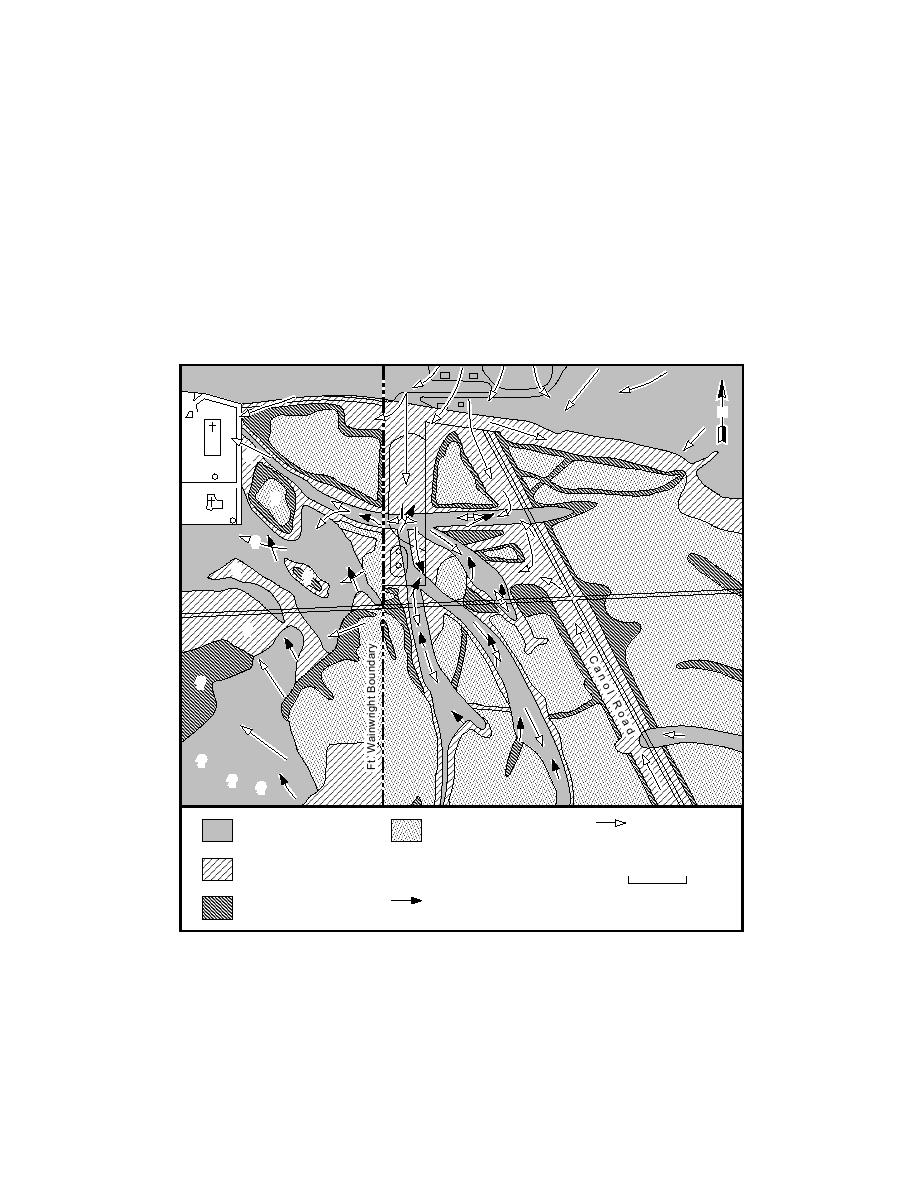
sufficiently thick to permit a continuous to mostly
The near-surface, perched ground water com-
continuous aquifer. Thin active layers of 1.0 m or
municates with the subpermafrost aquifer through
less are unlikely to support a continuous ground
the unfrozen zones of the former channel depos-
water aquifer, although sporadic, isolated ones
its (Fig. 14). Once within these unfrozen zones,
may exist in topographic lows. Thus, water may
local gradients, hydraulic conductivities and sedi-
move through a suprapermafrost aquifer within
mentarystratigraphic properties determine seep-
the Truck Fill Stand area, the suprapermafrost
age direction and velocity. The impermeable na-
thaw bulb below Canol Road, and the narrow
ture of the permafrost confines the aquifers within
unfrozen zone above bedrock along the base of
these deposits, possibly directing lateral move-
Birch Hill in the Tank Farm area (Fig. 15). The
ments (Fig. 16). Areas with a downward gradient
flow direction responds to a gradient generated
will result in movement into the subpermafrost
mainly by local conditions, including seepage
aquifer.
through the near-surface materials and weath-
The subpermafrost aquifer may respond to hy-
draulic gradients produced by either the subre-
ered bedrock of Birch Hill, and by runoff associ-
ated with precipitation or snowmelt.
gional aquifer within the Chena and Tanana riv-
N
?
?
?
?
?
?
?
?
?
?
Active Layer Above
Birch Hill Aquifer
Unfrozen
Permafrost (≤1.0 m)
Dominance
Deep Thaw Above
Based Upon
?
Permafrost (>3.0 m)
Limited Data
100 m
Subregional Aquifer
Shallow Thaw Above
Permafrost (>1.0-3.0 m)
Dominance
Figure 15. Potential deep aquifer flow paths depicted for two scenarios: a hydraulic gradient
dominated by the subregional aquifer and a more local system dominated by Birch Hill. The
resultant direction and velocity of flow for each scenario differ significantly in both the
subpermafrost aquifer and in unfrozen zones linked to it. Map made from unrectified aerial
photographs taken on 20 May 1993. Interpretations are based upon GPR and borehole data
and ground observations.
15



 Previous Page
Previous Page
